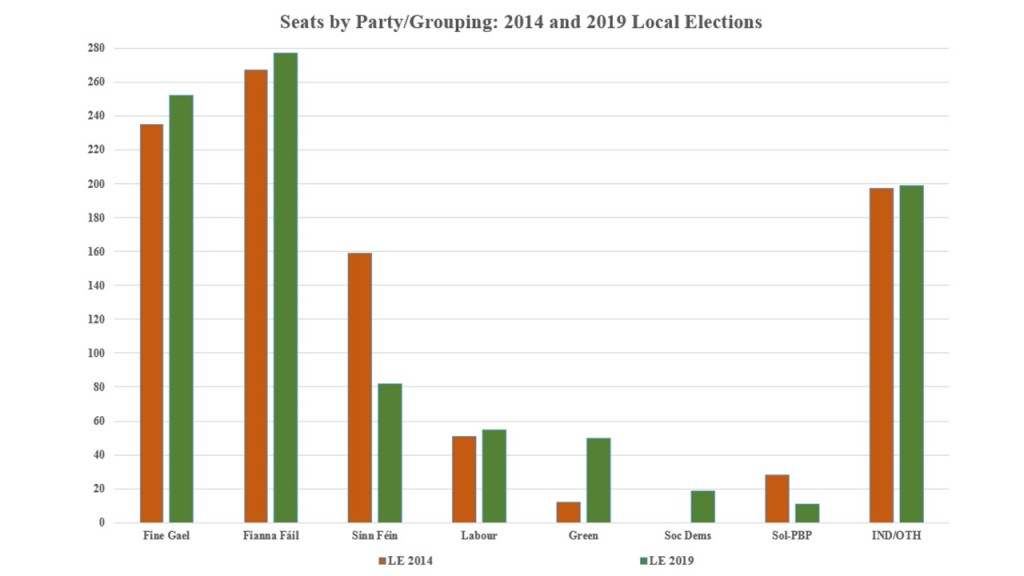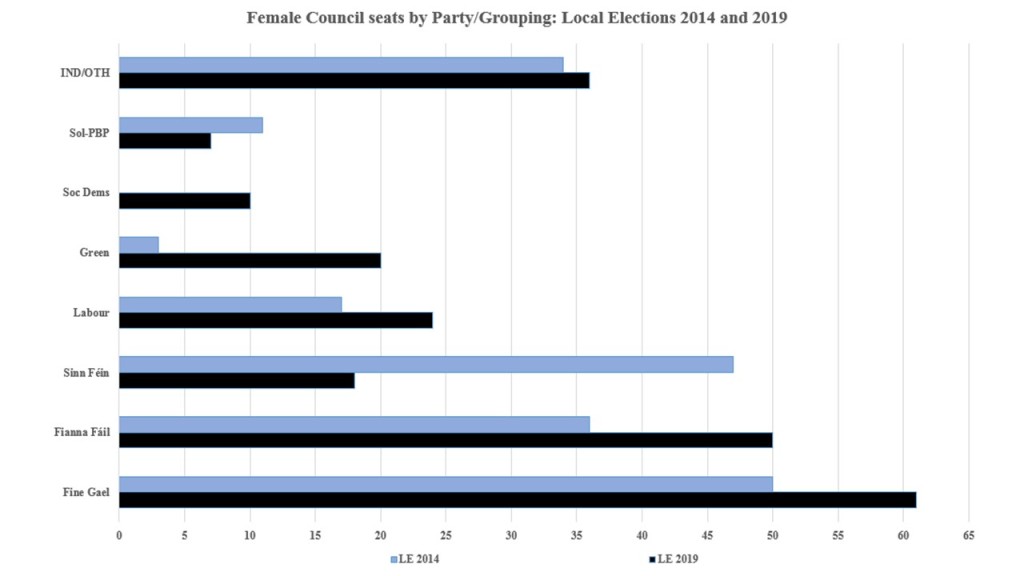Adrian Kavanagh, 28th March 2019
The 2019 City and County Council elections took place on 28th May 2019.
Perhaps the most notable trend at this election was to do with voter turnout. The average turnout level for the 2019 Local Elections is estimated to stand at 49.7%. This means that more than half the of the registered electorate did not turn out to vote in a local election contest for first time in the State’s history. To me, that’s a disaster. Furthermore, there seems to have been a notable drop in turnout levels, over and above the national average level of decline, in some working class areas, resulting in some very low turnout levels in electoral areas such as Tallaght South (26.9%), where barely over a quarter of the people, who were on the electoral register, turned out to vote.
My initial conclusions? We need to establish targeted voter education programmes, which would be especially focused on low turnout areas/groups, in order to encourage more people to turn out to vote. I am also enough of a realist to realise that problems with the electoral register are involved here (my in-depth analysis of the numbers on the register in the 2002 General Election suggested there were “too many people” on the register in rural areas and the more settled inner suburban areas of Dublin and other cities, while there tended to be “too few people” on the register in inner city areas and in the commuter belt/new housing areas. I believe that an Electoral Commission is needed – in part, to work on improve quality of electoral register, but also to support the aforementioned voter education programmes and to also carry out independent get-out-the-vote measures ahead of election contests.
In terms of party support levels, there was a notable gain in support levels for the Green Party – up by 3.9% on the party’s vote share at the 2014 Local Election, which was even more notable given that the Greens took just 1.6% of the vote in 2014. The Social Democrats won 2.3% of the total valid poll at that party’s first ever local election contest. The two largest parties, Fianna Fáil (up by 1.6%) and Fine Gael (up by 1.3%), both experienced marginal increases in their overall share of the national vote, however, as illustrated by Figure 1, the increase in seat levels for these parties tended to outstrip their overall gain in support levels, due in part to the reduction in the average number of seats per constituency/local electoral area. Labour Party support levels fell by 1.4% relative to their 2014 support levels; however this drop in support was largely due to the significant reduction in the number of Labour candidates contesting the 2019 elections, relative to the number who ran in 2014.

Two of the parties/groupings that had made the most significant gains at the 2014 elections both experienced significant losses in support, as well as representation, levels at the 2019 elections. Solidarity-People Before Profit support levels fell by 1.1% between the 2014 and 2019 elections, but this resulted in this grouping’s number of seats falling from the 28 seats, won at the 2014 elections, to 11 seats. The most notable gains at the 2014 elections were made by Sinn Féin, but that party experienced the most significant loss of support at the 2019 Local Elections, falling from the 15.2% support level won in 2015 to 9.5%, while the party’s number of seats fell from the 159 seats won in 2014 to 82 seats.
As discussed in an earlier post, there was notable increase in the number of female candidates contesting these local elections, relative to the numbers who had contested the 2009 and 2014 City and County Council Elections. This did feed into an overall increase in the number of successful female local election candidates, although the increase in the number of seats won by female candidate did not match the overall level of increase in female candidate numbers. The number of female candidates elected increased from the 197 seats won by female candidates at the 2014 Local Elections to 226 seats (with 2 seats still to be filled at this point in time), 23.8% of the number of seats (949) being contested at the 2019 Local Elections.

As Figure 2 shows, however, there were some notable variations in terms of the number of seats won by females between the different political parties and groupings. Sinn Féin and Solidarity-People Before Profit saw a decrease in the number of seats won by females (from these parties/groupings) between the 2014 and 2019 contests, although female incumbents did prove to be more successful than their male counterparts in the case of Solidarity-People Before Profit. Some parties did experience a notable increase in their numbers of successful female candidates, including the Green Party, Fianna Fáil, Fine Gael and Labour, as illustrated by Figure 2 (above). Two of the parties contesting their first ever local election contests were successful in getting female candidates elected, including the Social Democrats (9 female seats) and Aontú (2 female seats).
This was a very good election for New Irish candidates and may well spark a more dramatic increase in the number of New Irish candidates contesting the next local elections in 2024. There was a notable increase in the number of New Irish candidates contesting these elections, relative to the number that ran in 2014, with this level of increase being especially notable in the case of a number of the political parties, as discussed in an earlier post. The increased level of candidates was, however, outstripped in terms of the increased levels of support won by new Irish candidates, as well as the number of seats won by them. Just two new Irish candidates, Edmond Lukusa (Sinn Fein, Mulhuddart) and Elena Secas (Labour, Limerick City East) won seats in 2014, with their numbers being added to in 2016 when Madeleine Johansson got co-opted to replace Gino Kenny (People Before Profit, Clondalkin), after he won a seat in the 2016 General Election. By contrast, New Irish candidates won eight seats in these elections (and this number does not include the Green Party’s Hazel Chu (Pembroke), as the definition of a “New Irish candidate” in my earlier posts does not include candidates who were born in Ireland, as in the case of Hazel Chu. The number of votes won by New Irish candidates increased from an average of 221 votes at the 2014 City and County Council elections to an average of 367 votes at the 2019 elections. Female New Irish candidates, winning an average of 497 votes, did better than their male counterparts (average of 288 votes) at these elections.
